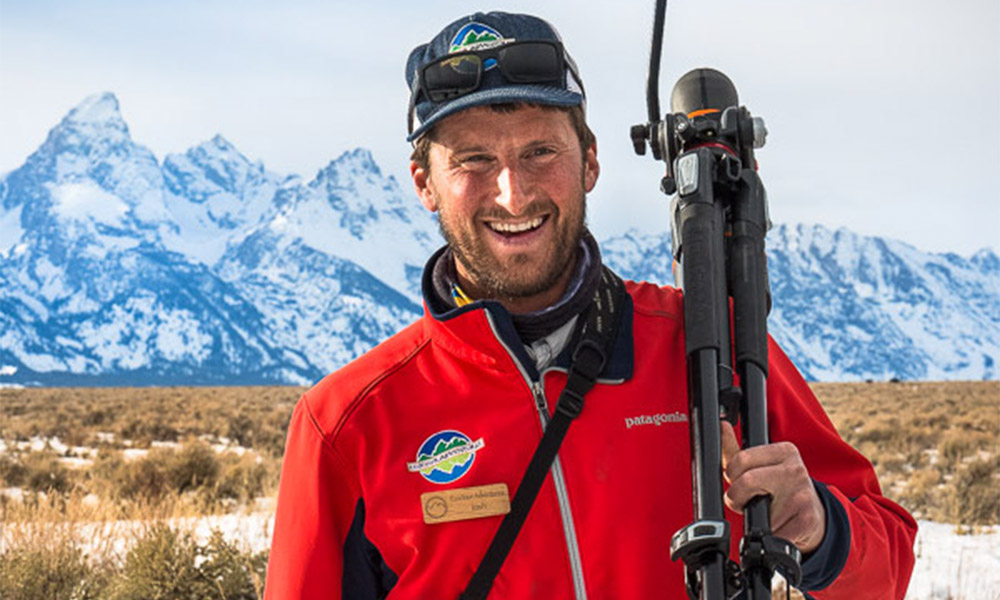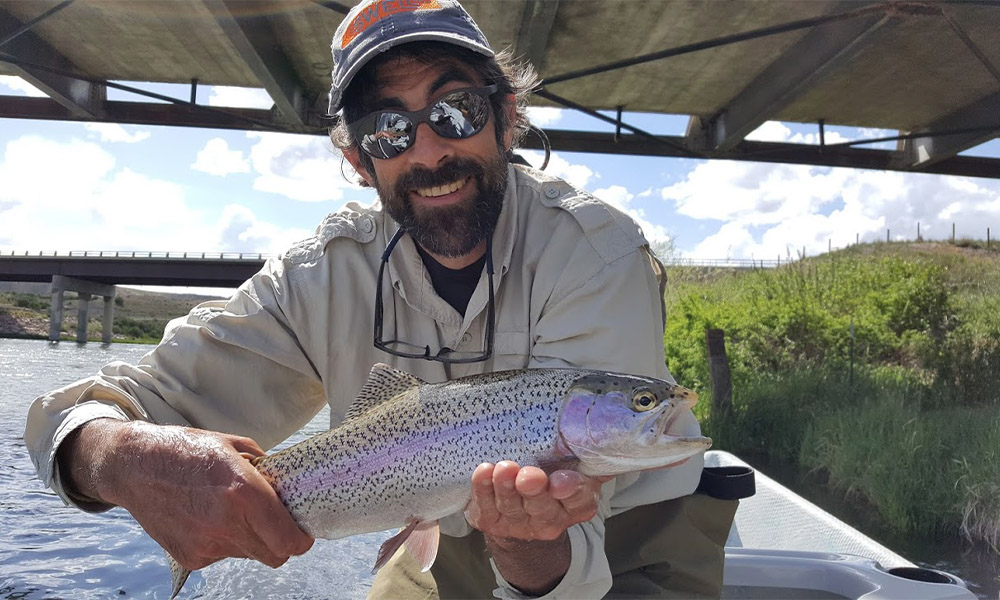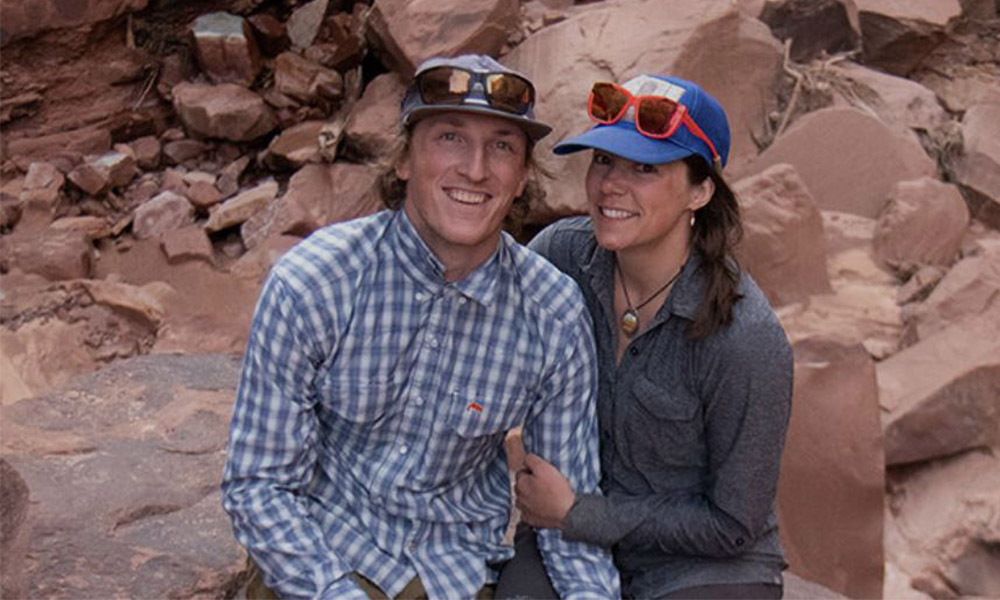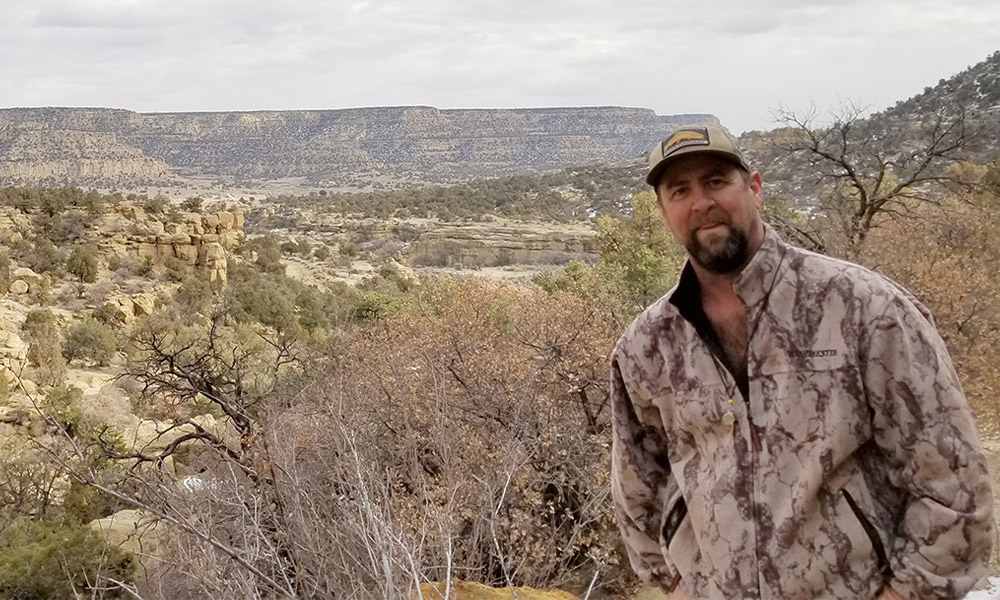Public lands cover nearly half of Wyoming, making the state perfect for a variety of outdoor recreation opportunities. Enjoying these wild spaces comes with a responsibility to keep them beautiful and accessible for generations to come. We spoke with several Wyoming stewards for more insights on how to be mindful in Wyoming’s outdoor spaces.
Forest Supervisor of the Uinta Wasatch Cache National Forest, Dave Whittekiend; Evanston-Mountain View District Ranger, Justin Robinson; Jackson Hole Ecotour Adventures naturalist, Josh Metten; and Elyse Guarino and Landon Blanchard with Wyoming River Cooperative answer questions on how to be a good steward of our lands.
How has outdoor recreation grown in recent years?
Dave Whittekiend:
The U.S. Forest Service just finished analyzing their numbers from last year, and we estimate that we were up almost 20 million visitors nationally in 2020 across national forest system lands. We know our trails were packed since trailheads were really busy. One of the most interesting points in the national numbers was a 75 percent increase in wilderness visitation. People were getting out into remote areas — probably a lot of day trips — but may have been learning how to backpack and camp in those areas. When you go up by 20 million visits, you’ve got to assume there were people who had never been out on national forest system land. We saw a big uptick in visitation across the country.
Josh Metten:
We definitely saw high visitation in the national forests around Grand Teton, and the national parks had a really busy year. It’s exciting to see so many people discovering what a lot of us that are already have a passion for the outdoors already know: These wild places that we have, especially in Wyoming, are absolute gems.
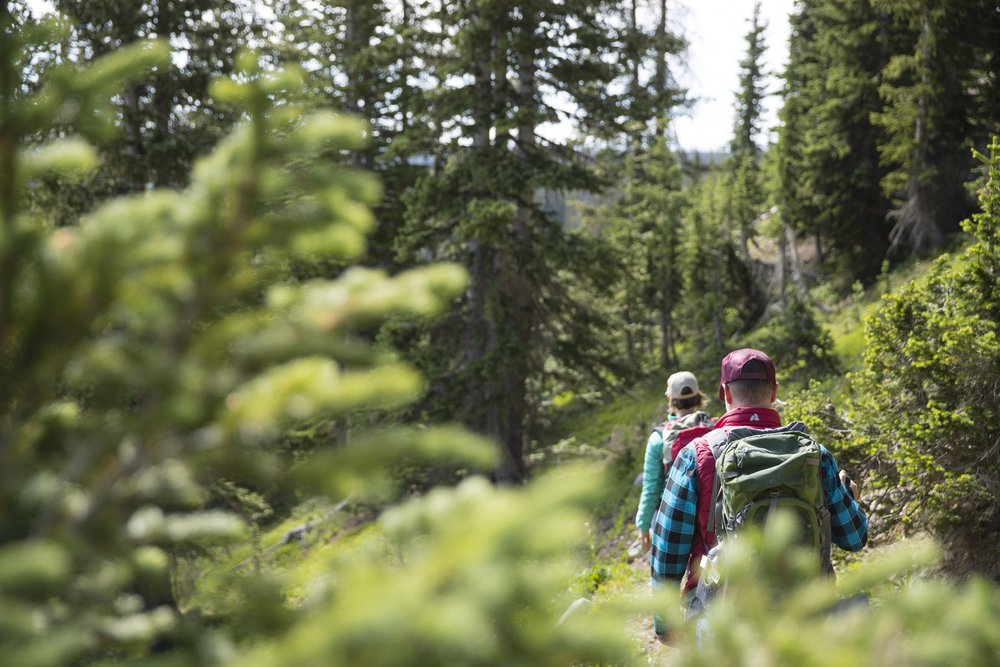
Landon and Elyse:
At some point in the summer it seemed like there were people everywhere. People were recreating with some pent-up energy. They were eager to get out and do things, so it felt different.
Justin Robinson:
We have a very high use recreation corridor along the Mirror Lake Scenic Byway. This is highway 150 that goes from Evanston south, and along that byway the receipts from people who paid their user fees was up nearly 50 percent. It’s a beautiful drive; there’s a lot of opportunities along that byway. But 50 percent is an immense increase, and we do know that a lot of those folks were first-time users to the forest.
I think that is just fantastic that something as horrible as the pandemic could come along, but it got a lot of people trying something that they hadn’t done before. I like to think about those good benefits. Yes, there are issues that come up with this increase. For example, a lot of folks may not have been out on our public lands much in their life and maybe don’t know quite as well how to treat that and what the etiquette and the protocols are. That sort of increased use takes a lot of patience on the public’s part. Patience with new users as well as patience with trailheads having more cars and lack of space and lack of campgrounds. Any education that we can get out there on how the public should deal with each other and act is going to help us all enjoy our public lands more.
What should you do if you see someone not following proper outdoor etiquette?
Josh Metten:
First, it’s important be patient. A lot of times if we see something going on that clearly isn’t right to us, it might be something that a visitor doesn’t realize is an issue. There’s this technique taught in Leave No Trace called authority of the resource. Authority of the resource is basically the idea that we make the issue about the resource and we use the authority of the resource to address the issue instead of making it about the person being the one causing the problem. We try to talk to the individual or the group in a way that makes them look at the situation themselves and separates them from being the problem.
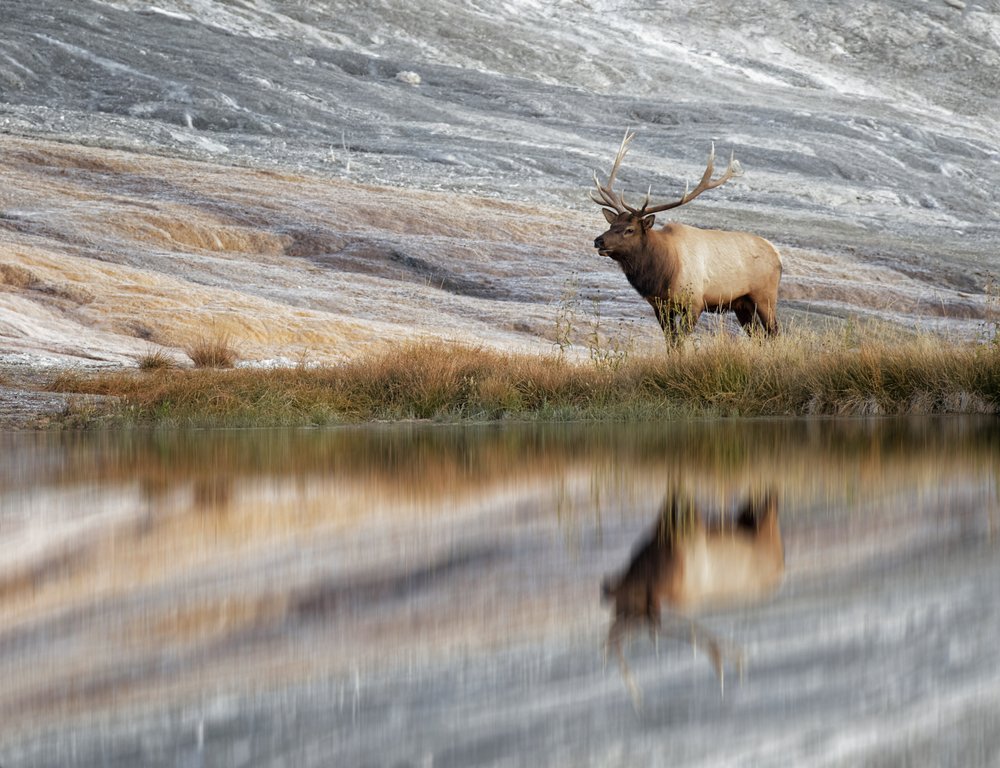
For instance, if you see someone that is getting way too close to an animal, you might try to talk to them about how that animal looks stressed or it could be dangerous getting that close. Try to make it about the animal instead of about the person. That’s something that I do as much as possible. If you’re confrontational, people are more likely to be defensive instead of actually looking at the situation and coming to the conclusion on their own that they should maybe do something different.
Landon and Elyse:
If it’s a risk management thing, sometimes you have to be direct and that’s really hard. In my experience with guiding various activities, it’s particularly hard when it’s something technical that is either endangering you a group or other people. But you should speak up for dangerous situations, since a group of stranded people or an injured person puts a strain on the infrastructure in place to keep people safe in the backcountry.
For protecting the environment, it’s also helpful to frame it for guests as if they’re staying at an Airbnb. A beautiful pristine place with gorgeous views and everything is perfect. I do that rather than saying you’re in your own home because a lot of people don’t live that cleanly in their own homes. But if you don’t take care of it you won’t be invited back, and that’s just sometimes a helpful framing for me one-on-one with guests.
Justin Robinson:
I think it’s really important that people feel like they have ownership of public lands because that creates a feeling of empowerment, which will help to continue that ethos of taking care of a place, yourselves and the people you’re with when you’re out recreating. However, if you don’t feel comfortable in a situation, don’t say anything. Instead, if you see someone causing damage or violating what you think are proper outdoor ethics, take pictures to document the situation if you can. Then turn that into whichever land agency you’re recreating on and they may be able to handle it. Please don’t escalate an already unfortunate situation and get into a conflict or a confrontation that’s not worth it. Be safe out there and have fun. This includes your interactions with other users.
Dave Whittekiend:
I think one of the most powerful ways of teaching people is being a mentor or a friend if you know somebody who’s interested in going outdoors. You can teach them the proper techniques and they’ll follow your example. Taking the opportunity to take someone out and show them the ropes, like how to set up a camp with minimum impact or why it’s important to stay on the trail, sets a powerful example. I’d also say outfitters and guides are in a unique position because they may be bringing people out to these areas who’ve never been there before, and they can provide them all the information in one area.
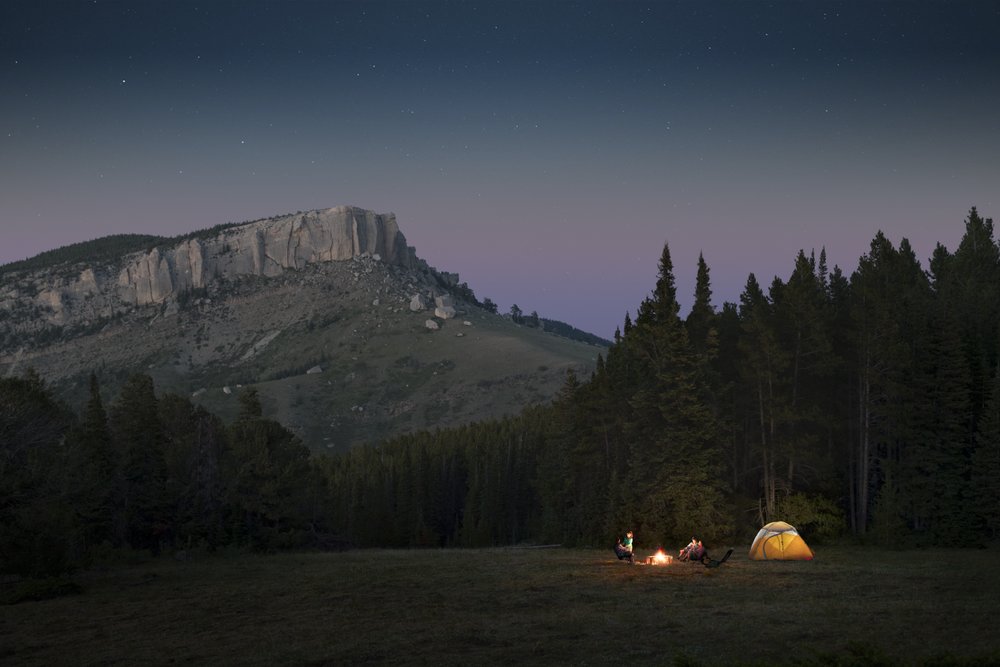
Q: How can you be best prepared to have a safe outdoor experience in Wyoming?
Landon and Elyse:
One thing that stands out to me that’s a little bit more abstract than technical and gear-based information is an ego piece. When you take time to recognize why you’re making decisions rather than being so focused on the end goal of doing something, it’s easier to make safe choices. Having a good mindset is an important way to be prepared for situations as they come, especially the unpredictable ones, and will help provide a more complete connection with your surroundings and experience.
Another part of planning ahead and being prepared for whatever it is you’re about to do or want to do is research. If you’re going to a trailhead you’ve never been to, don’t assume it’s like the trailheads you’ve been to. Do your research online or by calling the agency that manages the land you’ll be recreating on. At the very least, find out what ranger district it’s in and whether it’s BLM or U.S. Forest Service land, along with what the rules and regulations specific to the environment are. Forests, high desert and alpine areas all have different best practices, and unless you ask the question, you won’t find the answers and you won’t be prepared.
I think one thing we’ve all experienced at some point in our outdoor lives is having a great trip thinking everything was amazing, and then three years later now that you have new information you think back on something you did and you go, “Oh I can’t believe I did that!” To avoid those regrets, we should use the resources we have to do as much research as possible.
Learn more about preparing for a Wyoming adventure.
Josh Metten:
Yes, checking egos is important since often when we go into new places we assume it’s similar to what we’ve experienced before even though that might not be the case. We’re fortunate that we have a lot of resources around here in terms of agencies and local chambers of commerce. Organizations like that are actively putting out information.
This is especially important in some of the wildest parts of the state where in addition to dealing with backcountry scenarios, we’re also potentially dealing with large carnivores or potential for wildfire. We’re constantly trying to figure out how to educate people about these additional risk factors that are bigger than what they might be familiar with back home. I definitely recommend visitors consider guides in Wyoming. These are experienced people who can help not only provide a really good experience at the moment but also provide important skills and tools.
Learn more about having a safe wildlife-watching experience.
Justin Robinson:
The individuals who work in our U.S. Forest Service districts have decades and decades of combined experience with that very piece of land that you may be playing on. Call us; we’re in the phone book and we’re online. Reach out to find that knowledge. Be safe and over-prepared, and have fun. Whenever I’m planning trips personally, I usually don’t know what district to call. Sometimes that information is not obvious and I’ve definitely just called a random U.S Forest Service district ranger’s office and said what I’m looking for and they’re usually able to help me out. Definitely take advantage of the resources by just taking a shot in the dark, too.
Dave Whittekiend:
Our National Avalanche Centers have a saying in a program called know before you go. That really is the key. Take the time to do the research. Find out where you’re going, who manages that land and what equipment you might need. The amount of information out there is tremendous. It can be overwhelming, but you should feel confident about where you’re going and what you’re going to face.
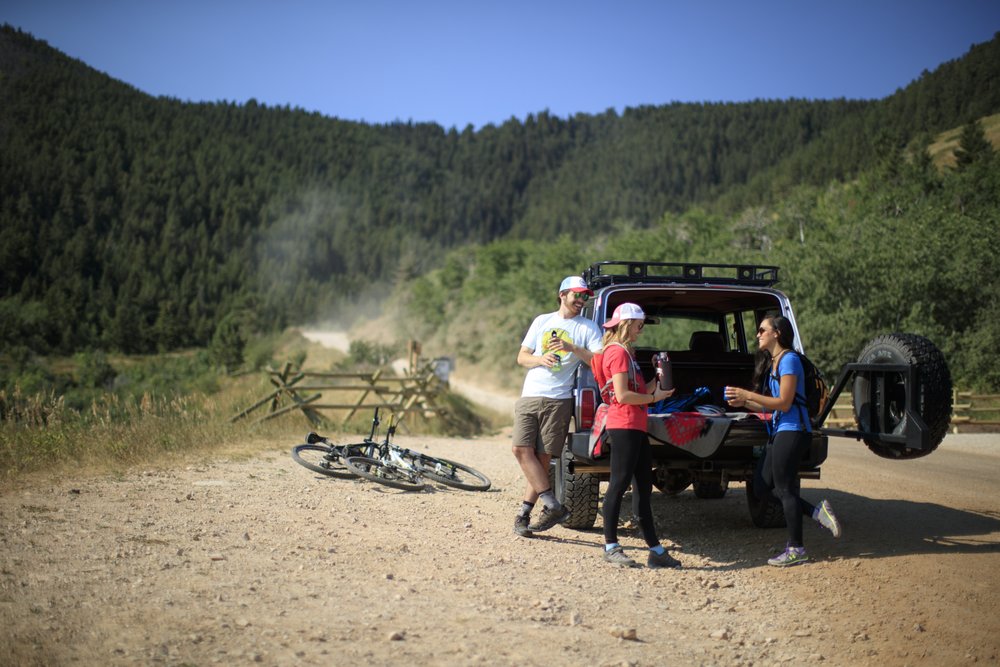
What are some basic things people can do to protect our lands and wildlife?
Dave Whittekiend:
One of the biggest things is trying to find a place that not everybody else is in. Contact those land managers so they can potentially point you to a less used, lesser known area that may be just as fascinating and worthwhile to go to. They may not give out their secret spots, but we don’t hold those things too tightly. Besides being flexible with where you go, be flexible with time of week or even time of day for less crowding.
Josh Metten:
One of the things I like to do when I’m out wildlife watching is carry optics with me. If I’m traveling in an area and I see something, there’s an opportunity to share what I’m looking at with others. This is really cool with kids sometimes, too, especially if you can set up a scope adapter for your spotting scope. The adapter allows me to look through my phone and show someone something from a distance. It might provide them with an opportunity to see something like a small songbird that they would otherwise ignore, but now they’re looking around and enjoying songbirds that they weren’t previously aware of. We have an opportunity to share things with other people to increase their passion for the outdoors and their ability to recreate in and experience this area in a safe and responsible manner.
Landon and Elyse:
Simplify your reason for going outside and your expectations. For example, if you go into a river trip expecting to hit the biggest waves and the gnarliest rapids and then it rains and snows for four days, or maybe the runoff was huge and there are log jams everywhere and you have to walk around, you’re not going to enjoy your trip. You’ll just feel disappointed at what you didn’t get to do. Enjoy wild spaces for what they are and the fact that they exist as opposed to all the things we expect to get from them by going there. You might not see any wildlife, but enjoying an incredible view and three hours of silence with people you enjoy is something you do get. If you’re looking for a guided trip, generally speaking it’s usually pretty easy to find outfitters that have respect for our natural resources and cater their trips to that.
Justin Robinson:
I would just recommend that everybody be mindful. We all have pretty good compasses internally, and we just need to slow down and really think about the decisions we’re making in the wild. You’ll have a better experience by slowing down, enjoying the outdoors and doing the right things.
How can people get involved in helping protect the outdoors and our communities?
Josh Metten:
In addition to what we can do as individuals, we’re really fortunate to have a lot of hard-working folks trying to look at the big picture issue of conserving our natural resources. This includes the agencies that are charged with managing these resources, such as our national forests. Ecotour Adventures is really proud to launch an initiative we’re calling Wildlife Tourism for Tomorrow. As a wildlife tour operator, we benefit from the wildlife and public lands in Wyoming, so we’ve created this initiative to start raising money for these organizations and the people that are working hard to keep these animals around.
Wildlife Tourism for Tomorrow is a voluntary program that encourages businesses in Wyoming to contribute to the fund, which goes to an organization known as the wildlife fund that funds conservation projects across the state. We’re really proud to be one of the initial members of that and to be working across the state inviting folks to join. We’re talking about conservation projects like highway funding helping to fund wildlife crossings on our highways so that fewer people are hitting wildlife. The website for that is wildlifetourismfortomorrow.org, and if you’re interested in learning more I would love to see folks join in.
Dave Whittekiend:
We have a lot of volunteer opportunities in the national forests. Just reach out to your local district office, or any other land management agency. We’re very proud of our volunteer programs, and the Uinta Wasatch Cache in southwest Wyoming actually has the largest volunteer program in the entire national forest system. I think volunteering is an outstanding way to protect the outdoors. When people donate their time, that’s one of the highest commitments they can make to any given cause. If people are interested in learning more about management of national forests and what it takes to provide these resources, I absolutely recommend taking the opportunity to volunteer and contact any agency. I’m sure they’ll welcome you.
Justin Robinson:
We love having volunteers. I think it’s one of the best ways to reach the public. Come hang out with our staff and pick their brains for a whole day. You can do some good work in the most beautiful places. We have lots of opportunities; it isn’t all just cleaning trash, although that’s an important project too. We’re doing work around some of our historic buildings, we build a lot of fences… There are a lot of different projects we do and we really welcome all abilities and ages. It’s great when the kids come out; they have so much fun. We may not get a ton of work out of them, but, hey, when they come back and work for us in 20 years it’s paid off. I can’t say enough good about the volunteer programs. Thanks to everybody who has volunteered, and if you want a program, call me. I’m in Evanston.
Landon and Elyse:
From a water perspective, there are several national organizations you can get in touch with just to understand what’s happening in watersheds. American Rivers is a really good resource Wyoming has locally, and most states do water conservation districts. Find out which districts the rivers you care about are in just from an education standpoint and try to understand what the issues are. A lot of times just living life in a town, we have our perspective of what the issue is, but our resources have many users and everybody has their own interests. I would say go to all the public meetings you can without the intent to state your opinion, but instead to glean information.
Eventually when you feel like you have a big enough picture you can start advocating for things, or better yet, be a connector. If you can become a person that has an understanding of all the different interests, then you can be a connector for your community and for decision makers. Sometimes we can get lost in our own interests or our own goals and expectations, but if you step back from that and see yourself as a participant in the whole thing, then you’re gonna see these other opportunities easier to be involved in.
WY Responsibly Tips from Local Wyoming Stewards
Learn practical tips from local professionals on how you can be a good steward of Wyoming’s natural spaces, communities and wildlife.
